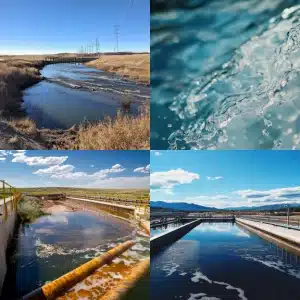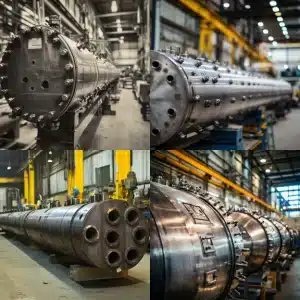
Metallurgical failure analysis investigates why metal components fail, using tests like visual inspection, chemical analysis, and mechanical evaluation. This process improves safety, reduces downtime, and ensures pressure vessel reliability by identifying root causes and preventing future failures.
Understanding What is Metallurgical Failure Analysis in Industry
Most metal structures play a vital role in industrial applications, especially when you rely on them to handle extreme temperatures, high pressures, or corrosive substances. When these structures fail, you risk downtime, service disruptions, and possible safety hazards. That’s where metallurgical failure analysis often referred to as failure analysis in metallurgy steps in: it’s a well-established process for identifying precisely why metal parts fail and how you can prevent a repeat event. Below, you’ll discover what is metallurgical failure analysis, why it matters for your operations, and how it fits into pressure vessel safety.
What is Metallurgical Failure Analysis
Failure analysis in metallurgy is a root-cause investigation of cracks, fractures, or breakages in metal components. In simple terms, you look at a failed part and use various scientific tests to figure out what went wrong. These tests might include visual inspections with high-powered microscopes, chemical composition checks, or mechanical stress measurements. By doing so, you learn if the underlying issue is linked to fatigue, corrosion, design flaws, or even a manufacturing defect.
A big reason this type of analysis is so important is the wide range of industries that depend on metals. Oil and gas, power generation, water treatment, and government projects all feature metal-based systems under constant stress. When a metal part breaks down, you want to be sure you understand the cause. Good news, though, this process is easier than it sounds when you work with a reliable team. Metallurgical failure analysis follows a systematic approach that you can learn step by step, ensuring you’re well-equipped to avoid hiccups in future operations.
You’ll often see metallurgy experts working with ASME-certified pressure vessels or complex pipe networks because a single crack can cause large-scale damage if it goes unnoticed. According to Red River LLC, an ASME-certified manufacturer, detecting early signs of stress in pressure vessels can save an entire facility from major operational losses. That’s why many facility managers consider metallurgical failure analysis and pressure vessel failure analysis a cornerstone of rigorous safety and compliance.
How it Helps You Avoid Critical Breakdowns
Just like a detective examines clues from a crime scene, metallurgical failure analysis and pressure vessel failure analysis zero in on microscopic details you can’t see with the naked eye. By detecting tiny fractures before they grow, you can sidestep the critical breakdowns that might otherwise lead to unplanned shutdowns or dangerous leaks.
- Early detection of stress: Preventing major failures avoids costly interruptions, emergency repairs, logistical chaos, and lost revenue from halted production.
- Reduced downtime: Preventing major failures avoids costly interruptions, emergency repairs, logistical chaos, and lost revenue from halted production.
- Improved safety: Pressure vessels under extreme conditions pose a genuine safety risk if they fail unexpectedly. A thorough investigation into early signs of fatigue or corrosion helps you maintain a secure work environment.
- Reliable performance data: Visual inspection reveals wear, discoloration, and cracks; breakage patterns indicate overload, smooth cracks show fatigue.
If you want to see how this process compares to analyzing broader failures, you might explore our page on mechanical failure analysis. Understanding the bigger picture of failure analysis ensures you’re ready to act on multiple fronts, from microscopic fatigue cracks to structural failures that affect entire systems.
Steps in the Analysis Process
When you decide to investigate a failed metal component, you generally follow a structured series of steps. This keeps the work organized, consistent, and easier to validate. Pressure vessel failure analysis often follows the same systematic approach. Here’s how it commonly unfolds:
- Visual examination: Visual inspection reveals wear, discoloration, and cracks; breakage patterns indicate overload, smooth cracks show fatigue.
- Non-destructive testing: Ultrasound and X-rays examine steel’s internal structure, detecting hidden cracks and flaws without destructive methods.
- Microscopic inspection: High-powered microscopes reveal grain boundaries, inclusions, or micro-cracks, exposing composition issues, welding flaws, or stress.
- Chemical analysis: Metal parts may fail from impurities or wrong alloys; chemical tests identify precise material composition.
- Mechanical testing: Hardness measurements, tensile strength tests, or impact evaluations show if the metal was too brittle or soft for its intended job. These findings are compared with ASME standards.
- Root cause determination: Finally, data reveals why the part failed, guiding alloy changes, weld improvements, and inspections.
Using these steps, you build a practical roadmap for improving your system. If your system includes tanks or networks, you can extend the same principles to areas like cryogenic vessels and pressure vessel failure analysis to ensure full protection.
Why it Matters for Pressure Vessels
Pressure vessels are at high risk of catastrophic failure if you don’t have safeguards in place. Crews often push them to extremes: high internal pressures, chemical contaminants, and sharp temperature swings. Because of that, you want a robust strategy to spot indicators early.
Metallurgical failure analysis lets you identify fatigue, corrosion, or improper manufacturing that place your vessels in jeopardy. According to Red River LLC, controlling variables in a prefabrication environment reduces errors that lead to cracks. This approach ensures every weld and material selection meets ASME codes, lowering the chance of future breakdowns.
If you want to understand the direct ways vessels can fail, visit our page on causes of pressure vessel failure. It details warning signs like surface changes, unexpected pressure readings, or minor leaks.
What is Metallurgical Failure Analysis in Practice
By now, you’ve seen that what is metallurgical failure analysis goes beyond lab work it’s a proactive strategy that saves money, improves safety, and extends equipment life. From microscopic evaluations to chemical testing, each step provides insights that lead to better maintenance, design, and operational practices.
Partnering with experienced manufacturers who combine metallurgical expertise with Red River LLC’s capabilities and ASME standards gives you confidence that your systems are built and maintained to last.
Take Action with Metallurgical Failure Analysis
If your operation relies on critical components or pressure vessels, don’t wait until failure strikes. Protect your business by working with professionals who understand what is metallurgical failure analysis and how to apply it. Request a quote or contact Red River LLC today to safeguard your equipment and ensure reliable performance.
Frequently Asked Questions
1. How is metallurgical failure analysis done?
Metallurgical failure analysis is done by examining the material’s structure, composition, mechanical properties, and service conditions to identify the root cause of failure.
2. Why is metallurgical failure analysis important?
Metallurgical failure analysis is important because it helps prevent repeat failures, improves safety, reduces downtime, and enhances the reliability of metal components.
3. How long does a typical failure analysis take?
It varies. Simple cases, like identifying a single crack, might wrap up in a few days. Complex failures that need deeper chemical or mechanical testing can take several weeks. Timeframes also depend on part availability and lab resources.
4. Is metallurgical failure analysis expensive?
While there is a cost for skilled labor, technology, and lab work, it often pays for itself by preventing bigger problems down the road. Catching an emergency early can save you from replacing entire systems and halting production.
5. Can it help me reduce insurance or liability risks?
Yes. Having clear documentation of your failure analysis activities shows diligence and proactive maintenance. Insurers and regulators often view this as a positive risk-management step, potentially lowering premiums or compliance costs.
6. How do I know if my pressure vessel is a candidate for analysis?
If you notice unusual noises, vibrations, or changes in performance, you should consider analysis. Regular inspections also help you decide whether a deeper metallurgical review is warranted.
7. Do I always need a full metallurgical failure analysis, or can I just replace a broken part?
Replacing a broken part might solve the immediate issue, but it doesn’t necessarily address the root cause. Failure analysis uncovers if you’re facing recurring design issues, material weaknesses, or an environmental hazard.
Key Takeaways
- Follow a structured method: Step-by-step testing, from visual inspection to chemical analysis, gives you a full picture.
- Pay extra attention to pressure vessels: These structures operate under stress and can fail catastrophically if cracks remain undetected.
- Use the right expertise: Partner with professionals familiar with ASME standards and prefabrication to ensure high-quality results.
- Keep learning and improving: Each failure analysis gives you clues to strengthen material selection, expand inspections, and refine operational procedures.




